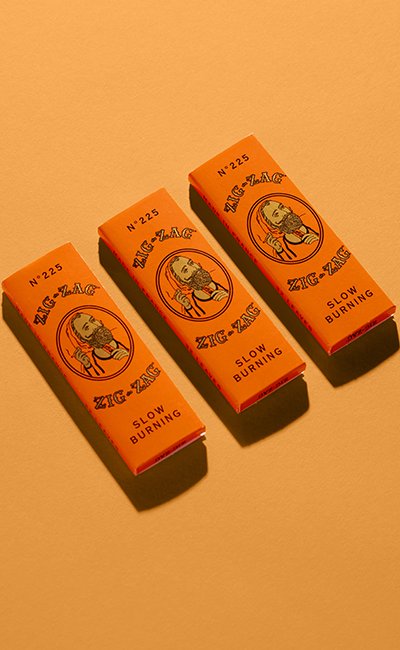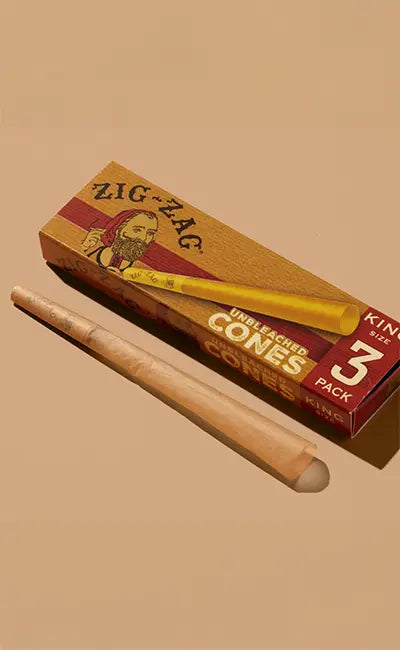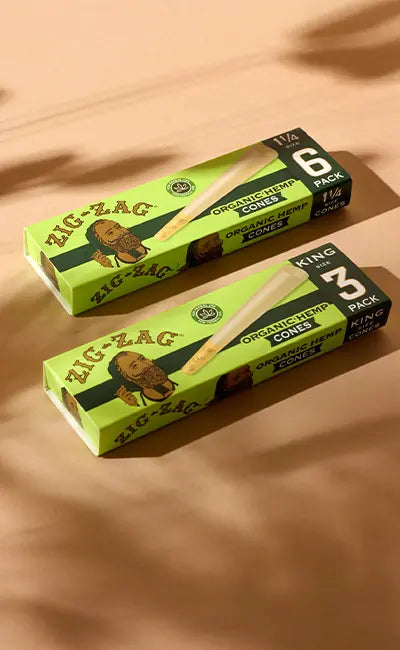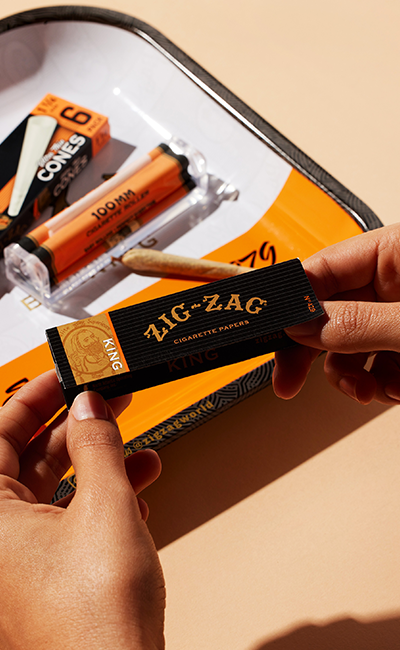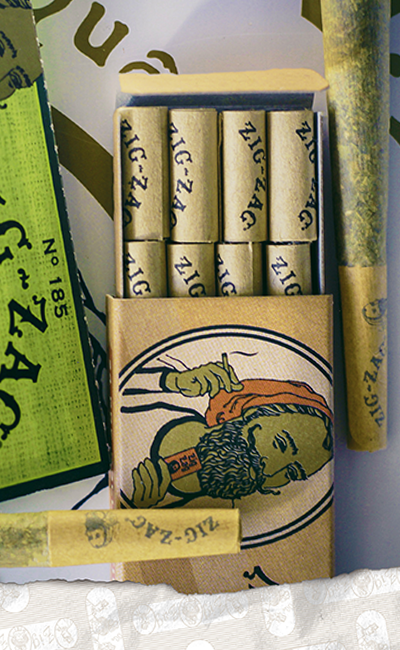When it comes to smoking, the type of rolling essentials for smokers you choose can significantly impact your smoking experience. Rolling papers are not just a medium to hold your tobacco or herbs; they define how smoothly and evenly your smoke burns. Everything can be influenced by the paper you select, from the taste and burn rate to the strength of the drag. As a smoker, understanding the different materials and sizes available is crucial for customizing your experience. Whether you opt for hemp vs. rice rolling papers, each type has distinct characteristics that cater to various preferences and smoking styles.
Types of Rolling Papers and Their Unique Characteristics
Which is Best for You?
Hemp papers are celebrated for their environmental sustainability and slightly thicker texture, which can provide a slower, more even burn. This makes them ideal for those who appreciate a leisurely smoke. On the other hand, rice papers are known for their thinness and almost invisible burn, offering a purer taste of your smoke without any interference. However, they can be a bit trickier to handle due to their delicate nature. The
rolling paper durability is crucial for a satisfying smoke.
Benefits of Unbleached Rolling Papers
These are free from chlorine and other bleaching chemicals, typically found in white rolling papers, making them healthier. The natural, light-brown color of unbleached papers is not just for aesthetics; it also indicates a minimal processing approach, which ensures that you’re inhaling fewer chemicals. Smokers often report a cleaner taste and a more authentic flavor profile when using unbleached papers, enhancing the overall quality of the smoking session.
Flavored Rolling Papers
Available in an array of flavors from sweet, fruity options like strawberry and grape, to more exotic flavors such as chocolate and coconut, these papers can significantly enhance the aroma and taste of your smoke. They are especially popular among those who enjoy mixing different herbs and tobaccos, as they can complement or intensify the natural flavors. While flavored papers are enjoyable, choosing high-quality brands is important to avoid papers that might contain harmful additives.
Mastering Rolling Techniques for Smoking Cones and Joints
How to Roll a Perfect Joint
Mastering cone rolling basics involves understanding how to properly fill and seal your cone for an optimal smoking experience. Here’s a comprehensive guide to help you master this art:
-
Prepare Your Materials: Gather all the rolling essentials for smoking that form the foundation of your process. You will need high-quality cannabis, your choice of rolling papers, a filter (often called a crutch), and a reliable grinder. The grinder is indispensable as it breaks down the cannabis into a fine, even consistency, ensuring a uniform burn throughout the joint. It is important to select a grinder that not only produces an even grind but also preserves the potency and aroma of the cannabis. Also, check that your rolling papers are of good quality; they should be thin enough to allow for a slow, even burn while remaining sturdy. Take a moment to organize your workspace so that all materials are within reach, ensuring a smooth workflow without interruptions.
-
Create a Filter: Constructing a filter, often referred to as a crutch, is a crucial step that provides structure and improves airflow in your joint. Cut a small piece of thin cardboard, typically found in a business card or a pre-made filter tip, and cut it to your desired length. The filter should be long enough to secure the end of the joint without impeding the draw, but not so long as to reduce the amount of available cannabis. Once cut, gently roll or fold the cardboard into a small cylinder that fits snugly into the joint’s tip. This filter serves multiple purposes: it prevents bits of cannabis from entering your mouth, adds stability to the joint during the roll, and even aids in maintaining a consistent burn rate. Consider experimenting with different shapes or thicknesses of filters to find the optimal balance between draw resistance and structural integrity.
-
Arrange Your Paper: Properly arranging your rolling paper is an essential step that sets the tone for the entire rolling process. This positioning allows you to align the paper correctly and ensures that the final roll will have a clean, seamless closure. Take a moment to observe the paper's texture and any printed designs, as these can help guide you in maintaining symmetry throughout the roll. The paper should be laid out on a flat, clean surface to prevent any unwanted creases or folds that could disrupt the uniformity of the joint. Some smokers prefer to lightly moisten the adhesive edge with a dab of saliva before rolling, which can aid in securing the paper once the joint is complete. The initial arrangement of the paper is more than a preparatory step; it is the blueprint for the entire joint, and proper setup is essential for achieving a balanced and professional finish.
-
Fill the Paper: After setting up your rolling paper, it’s time to fill it with your finely ground cannabis. Evenly distribute the ground herb along the length of the paper, ensuring a consistent layer that spans from one end to the other. Uniform filling is critical, as uneven distribution can lead to hotspots and an irregular burn. Place the pre-made filter at one end of the paper before filling, which will serve as the mouthpiece and provide a stable structure for the roll. As you sprinkle the cannabis, be mindful of the quantity; too little may result in a weak joint, while too much can make rolling difficult and lead to an over-packed product that restricts airflow. Gently tap the paper to settle the cannabis into place, creating a slightly compacted layer ready to be shaped into a cylindrical form. This step is not only about quantity but also about quality; the even distribution of the herb ensures that every draw provides a balanced hit, maximizing the flavor and potency of your joint.
-
Roll: Maintaining a steady, consistent pressure during this process; too much pressure can cause the paper to tear, while too little may result in a loosely packed joint that burns too quickly. As you roll, pay close attention to the distribution of the cannabis, making any necessary adjustments to ensure it remains evenly spread across the paper. This step also involves maintaining the shape of the joint, which can be refined by using your fingers to gently guide the paper and ensure that the cylindrical form is maintained from end to end. Patience and practice are essential here, as the skill of rolling comes with experience and a keen attention to detail.
-
Seal the Joint: This process requires a delicate balance of precision and confidence, ensuring that the paper wraps neatly around the herb without causing any disruptions in its uniformity. Once the paper is properly aligned, lick the adhesive strip to activate its sticky properties, then complete the roll by firmly pressing along the seam to secure the joint. The sealing step prevents the joint from unravelling and plays a crucial role in how it burns. A well-sealed joint will have a consistent burn, with minimal tunneling or uneven combustion, ensuring that every puff is smooth and enjoyable. It is important to work methodically during this stage, as rushing can lead to creases or gaps that may compromise the roll's integrity.
-
Pack the End: Once the joint is sealed, packing the open end is essential for ensuring an even, controlled burn throughout your smoking experience. This step involves using a small, smooth tool, such as a pen or a similar cylindrical object, to compress the cannabis at the end opposite the filter gently. Insert the tool into the open end and apply gentle, consistent pressure to pack the herb evenly along the joint’s interior. This compaction is crucial as it helps to create a uniform density, preventing the joint from burning too quickly or unevenly. Properly packed cannabis ensures that the burn is slow and steady, which not only enhances the flavor but also maximizes the efficiency of the cannabis, allowing for a longer, more satisfying session. Take care not to over-pack the joint, as excessive compression can restrict airflow and make drawing difficult, resulting in a less enjoyable experience.
-
Twist the Tip: The twisting process should be done with care, ensuring that the twist is tight enough to secure the contents without overly compressing them, which could alter the burn rate. Take your time to achieve a smooth, uniform twist that reflects attention to detail. A well-twisted tip is indicative of a finished product that has been crafted with precision and care, and it enhances the overall experience by ensuring that the joint remains intact until the very last puff.
Each stage of the process plays a critical role in ensuring that your joint burns evenly and delivers a superior smoking experience. With practice, you will refine your technique and enjoy the art of rolling as a personal expression of craftsmanship.
Smoker Rolling Tips for Consistency
Always ensure your herbs are evenly ground, as uneven chunks can lead to hot spots and irregular burning. Moisture content is also crucial; overly dry herbs will burn too quickly, while too moist herbs can cause runs. Practicing these tips regularly will help you achieve the perfect roll consistently.
The Role of Filters in Rolling for a Smoother Smoke
Pre-Rolled Filters vs. DIY Filters
Pre-rolled filters for rolling joints offer convenience, ideal for those who value consistency and time-saving options. They are readily available in various sizes and materials, catering to different preferences. DIY filters, on the other hand, allow for size, thickness, and material customization, which can be advantageous for those with specific smoking preferences or who are looking to reduce waste by utilizing recyclable materials.
How Filters Help with Airflow
A well-placed filter can significantly enhance the draw of a joint, allowing for smooth, consistent puffs without the frustration of blockages or the annoyance of bits of material in your mouth. Additionally, filters help in conserving your smoking material:
-
Prevent Material from Escaping: When you smoke, the natural tendency of the joint is to pull in not only air but also tiny fragments of the cannabis, which can be frustrating if they end up in your mouth. A well-designed filter stops these particles from migrating through the joint by catching them at the mouthpiece. This ensures that all your valuable smoking material remains inside the joint, optimizing your usage and reducing waste. Furthermore, by containing these fine particles, the filter also maintains the structural integrity of the joint, which is essential for achieving an even burn. Without a filter, you may find that some of the herb is lost with each puff, ultimately diminishing the overall efficiency of the joint.
-
Optimize Combustion: By maintaining the proper structure and stability of the joint, filters help ensure that the burning process is even and controlled. The filter plays a significant role in preventing the joint from becoming too moist or misshapen, which can lead to hot spots and premature extinguishing. This even burn enhances the flavor and ensures that every puff draws the perfect balance of heat and airflow, reducing the need to relight the joint frequently. In this way, filters contribute to a smoother, more efficient combustion process that makes the most of your material. Moreover, by controlling the burn, the filter reduces the chances of overcooking the cannabis, which can lead to a harsher taste and diminished aroma.
-
Enhance Airflow: The joint burns more evenly with optimized airflow, as the air passes uniformly through the cannabis. This improved air circulation not only leads to a smoother smoking experience but also enhances the overall efficiency of the joint by ensuring that every bit of material is consumed at an ideal rate. Also, the regulated airflow helps in maintaining an optimal temperature that prevents the joint from overheating or burning too quickly, preserving the delicate flavors and active compounds of the cannabis.
-
Reduce Tar and Residue: Another important benefit of using filters in joints is their ability to reduce the amount of tar and other residues inhaled during smoking. As cannabis burns, it produces tar, ash, and other particulate matter that can be harsh on the throat and lungs if inhaled directly. Filters are designed to absorb a significant portion of these byproducts, trapping them before they reach your mouth. This reduction in tar and residue not only results in a cleaner, smoother hit but also contributes to a healthier smoking experience by minimizing the intake of potentially harmful substances.
Integrating a correctly sized filter into your roll ensures a more enjoyable experience with every puff.
Choosing the Best Rolling Paper Brands and Accessories
What to Look For
When selecting
high-performance rolling papers, consider several factors to ensure you get the most out of your smoking experience. The quality of the paper directly affects the taste, burn rate, and overall satisfaction of your smoke. High-performance papers should burn evenly and slowly, without any flavor that might mask the natural taste of your herbs.
Best Rolling Paper Brands
Identifying the
best rolling paper brands involves looking at their reputation for quality and consistency. Brands like RAW are widely respected in the smoking community for their reliable and high-quality papers. These companies offer various options, including organic and hemp-based products, catering to health-conscious smokers.
To truly elevate your rolling game, combining quality materials with the right techniques and accessories is essential. By understanding the nuances of different
premium rolling papers and employing filters correctly, you can enhance the quality of your smoke and make each session enjoyable. With practice and the right tools at your disposal, you'll find that rolling the perfect joint becomes a simple, satisfying part of your smoking ritual.





